
- Все
- Экономика и бизнес
- Промышленность
- СМИ и индустрия развлечений
- Издательская деятельность и журналистика
Бесплатный фрагмент - Time and money
Russia. From Alexander the First to Vladimir Lenin. A story of love, wars and money
Time
…In 1804, in response to the annexation of Eastern Georgia to Russia, and incited by the British leading their game in Asia, the Shah of Persia Feth-Ali (Baba Khan) declares war on Russia. In June-July, Russian troops, having defeated the Iranian detachments, besieged Erivan (Yerevan), but retreated due to heavy losses. The Karabakh, then the Shirvan (part of present-day Azerbaijan) Khanates passed under the authority of Russia. Since August 12, 1805, the Caspian flotilla has dropped anchor in the Baku bay. Russian general I. Zavalishin convinces Huseyngul Khan to accept citizenship of the Russian Empire. After unsuccessful negotiations, the squadron bombarded Baku for 11 days, landed troops, and defeated the Khan’s troops that had left the fortress. However, due to serious losses and a lack of ammunition, the siege ends. On January 30, 1806, the Caspian flotilla, which replenished its reserves, and a two thousandth detachment of infantry stood at the walls of the eastern capital. It seems that the transition of the Baku Khanate to the Russian Empire is a done deal. However, the khan’s cousin is involved in the negotiations. His bodyguards are killing Russian envoys. In the summer of the same year, Russian troops defeated the forces of the Persian commander (son of the shah) Abbas Mirza and annex the Baku, Derbent and Kuba (part of present-day Dagestan and Azeibarjan) khanates.
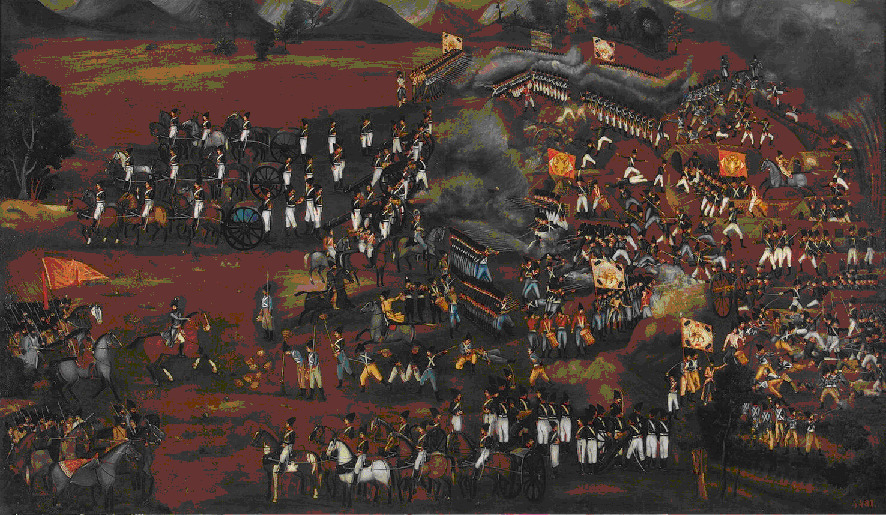
After the end (running in parallel) of the Russian-Turkish war in January 1812, Persia tends to sign a peace treaty. The Napoleonic invasion of Russia lends additional weight to the war party at the Shah’s court. South Azerbaijan becomes the site of the formation of the 30,000th army of the invasion of Georgia. Further, on February 1, 1812, the 18,000-strong Persian corps, under the control of British officers, managed to encircle, force one of the Russian battalions to surrender. This is where their luck ends.
And, on October 24, 1813, the Gulistan peace treaty was signed in Karabakh. All acquisitions of the Empire were recognized, except for Eastern Armenia, which was returned to Persia. The peoples of the Caucasus and Transcaucasia are getting rid of the threat of invasion by Persia and Turkey. However, racial and religious tensions in the region are becoming one of the long-term factors of Russia’s instability.
The third coalition against Napoleon and his allies – Spain, Bavaria, Italy, arises after the signing of the Petersburg Union Treaty by England and Russia on April 11, 1805. Later it is joined by Austria, Sweden and Portugal.
Bonaparte is not helped by the fact that he, in essence, becomes a monarch. Since December 1, 1804, according to the results of a plebiscite poll among his people, with 0.07% of the votes “against” he is proclaimed emperor. Russian and French rulers exchange insults.
Great Britain is not so much fighting as it is paying. From the treasury, 1 million 250 thousand pounds sterling is allocated for every 100,000 coalition soldiers annually. That’s 80 grams of gold, or 900 modern pounds for one private.
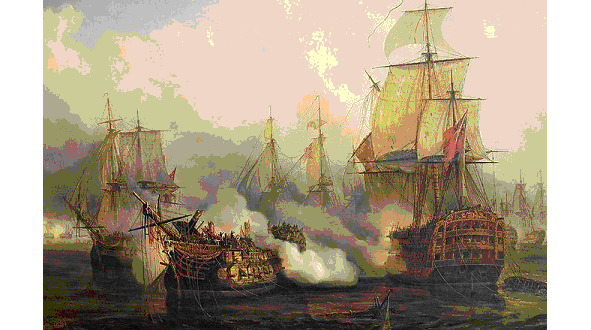
Bonaparte is preparing a landing across the English Channel, against his main opponent, and, so to speak, “customer”, a considerable 180 thousand cavalry and infantry. The Franco-Spanish fleet is sent from the Mediterranean to support the landing and, at Cape Trafalgar (near the Strait of Gibraltar), meets with the British Navy. The forces are approximately equal, three dozen ships of the line on each side, but the British gunners are more skilled, and the noble officer corps of the “Lady of the Seas” did not suffer from the work of the revolutionary guillotines. Allied ships suffer crushing losses of manpower in artillery duels (4500 versus 450 for the British), are boarded and captured. The British do not lose a single ship. Their brave Admiral Nelson is killed. In a barrel of rum (according to legend, drunk by the sailors on the way), the body of the commander returns to his homeland.
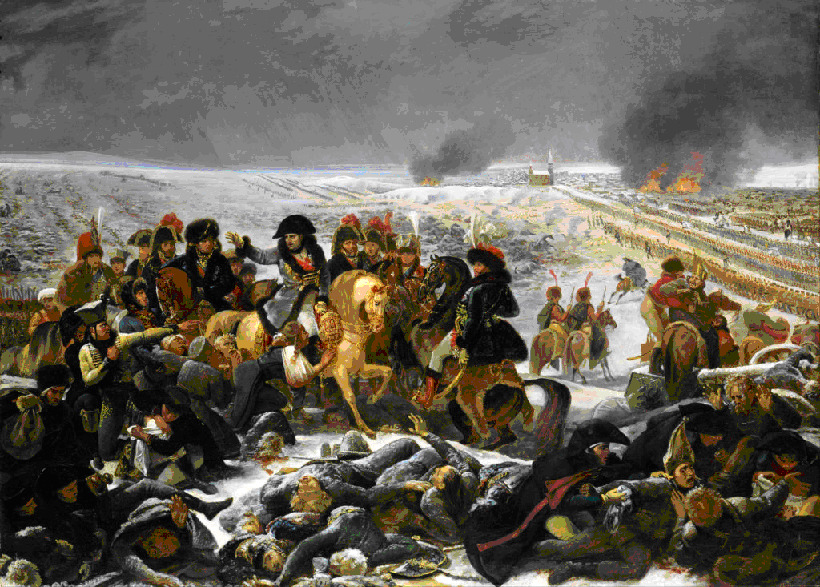
…In the summer of 1807, on the river near the town of Tilsit (now Sovetsk, Kaliningrad region), the Peace of Tilsit is concluded between France and Russia. Russia recognizes the conquests of Napoleon, the restoration of Poland’s statehood in the former Prussian possessions, and the rule of France over the Ionian Islands. At the insistence of Napoleon, the Russian Empire withdraws its troops from Wallachia and Moldavia, already conquered from Turkey, participates in the naval blockade of England, recognizes the three Bonaparte brothers — Joseph, Louis, Jerome, as kings of Naples, Holland and Westphalia, respectively.
Somewhat earlier, in 1806, due to an insignificant, in essence, the dismissal of the ruler of Moldova without the prior approval of Russia, another Russian-Turkish war began. The Russian army once again storms Izmail, takes possession of Yassy, Bendery and Bucharest.
…Admiral Senyavin’s fleet is blocking the Dardanelles, landing troops on the islands, making progress. In August 1807, with the mediation of Napoleon, an armistice was concluded with Turkey.
Active ground fighting resumed in 1810. They boil down to a series of battles in the territories of Moldova, Romania and Serbia. In 1812, the Bucharest peace treaty was signed. The Bessarabian region (part of present-day Moldavia) and some territories of the Transcaucasia ceded to Russia. The border of Europe is shifting somewhat to the south. The Danube principalities as well as Serbia are returned to Turkey. Russia is withdrawing from the war with the Porta in a hurry, on the eve of a large-scale Napoleonic invasion.
…In 1808 and 1810, Napoleon, wishing to become a monarch recognized by the European courts, sent proposals to the Russian reigning house to marry Alexander’s sisters, Catherine, then Anna. This request is politely declined. Bonaparte is deeply offended. He marries an Austrian princess. Thus, among other things, Bonaparte provides the French Empire with a strong rear and military support.
Meanwhile, Russia maintains a continental blockade of Great Britain. The export of food stops. The price of bread falls by half. Domestic light industry is rising, in particular, the production of technically sophisticated luxury goods. But, the nobility is already accustomed to the goods produced in England. Therefore, Russia trades with the “Lady of the Seas” through neutral countries. The French government is aware of this.
Napoleon proclaimed the idea of expanding the Duchy of Warsaw to the borders of the Polish-Lithuanian Commonwealth during the time of False Dmitry. This is impossible without alienating part of its ancestral lands from Russia. The emperor regards the advancement of units of the Russian army to the borders of the Duchy as an immediate threat to the vassal.
Bonaparte’s main plan is a huge dependent Poland, which includes Ukraine, Belarus and Lithuania. A world with a shrunken Russia. Full continental blockade of England, then the occupation of Great Britain. Theoretically — a campaign to India, the return and growth of the French colonial possessions (the First Empire). Hypothetically, Napoleon becomes the ruler of the whole world.
It’s not so impossible. England owns 27% of the earth’s land, which, together with the colonies of France itself, as well as the Netherlands, Portugal and Spain, which became part of the suzerain of the Commonwealth, makes up more than half of the territory of the globe.
This plan does not fit the liberation of the Russian peasants from serfdom. At the beginning of his career, Bonaparte serves the Convention and the Republic, introduces a progressive Civil Code, destroys the basis of the feudal system. However, he despises “ordinary people”, and tries not to resort to their assistance. He is not at all the benefactor of the people. In parts of Belarus and Lithuania, at the beginning of the summer of 1812, Napoleon abolished serfdom. The peasants begin to plunder the former oppressors, landlords and their families. They are not becoming noticeably more loyal to the French army. Napoleon is primarily interested in the supply of his troops. Three weeks later, he returns the peasants to the landlords, provides security, so that the nobles themselves collect food and give it to foragers. And so it happens. It should be borne in mind that the aristocracy of the region counted on the revival of the Commonwealth, and therefore was so welcoming to the conquerors. Considering his experience with the liberation of the serfs unsuccessful, Napoleon projects his conclusions throughout Russia. He does not pay attention to the fact that the Russian nobles are satisfied with their high position. There is autocracy here, but it is limited, in the extreme case of landlord discontent, by an apoplectic blow (a snuffbox to the temple). The gold saved during the expropriation of peasant reserves, the propensity to plunder churches and monasteries, arrogance, will subsequently turn into rivers of blood of Napoleonic soldiers.
Napoleon’s army is: 20,000 Prussian soldiers — Prussia is offered some territories of the current Baltic states, 30,000 Austrians, 100,000 Poles, 21,000 Italians, 300,000 French, 8,000 former Russian prisoners of war who believe that they are going to free the country from serf slavery, and also parts from other countries subordinate to the French Empire. Total about 6
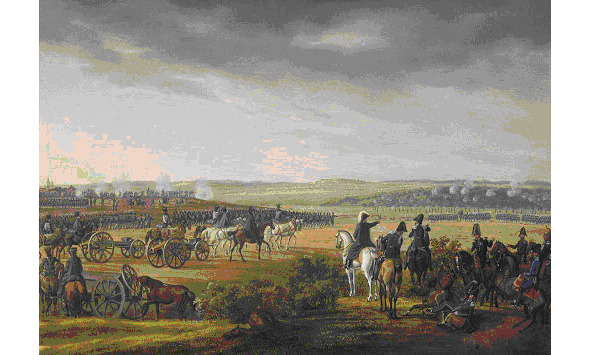
At noon, Russian troops successfully counterattack. Marshal Bagration is in the front rows. A shard of the core injures the commander. The news of this instantly demoralizes the army. The retreat begins. The onslaught of the French is weakening after the raid on their rear of 2500 Cossacks by General Platov. The troops are regrouping. Napoleon leaves the left flank of the Russians, rushes to the center, recaptures the redoubts at the cost of almost all his heavy cavalry, and stops. At seven o’clock in the evening, the French emperor withdraws troops from the battlefield.
At night, having collected the wounded, the Russian army retreats to Mozhaisk, 105 kilometers west of Moscow. About 20,000 seriously wounded remain in the Mother See and later perish in the fire.
Losses of the parties. Russian army 42,000 killed (30% of the composition). Napoleon’s army – 35,000 people (25%).
After the battle at Maloyaroslavets, Napoleon realizes that he will not be able to gain a foothold in the south of Russia, and leaves the Smolensk road, plundered by his own troops. Survivors, including the servicemen of the German McDonald corps, remain 30,000 people. Of the imperial guard, numbering at the beginning of the invasion of 47 thousand, 400 or 500 survive. There are 100 thousand prisoners and deserters. A significant part of them voluntarily remained in Russia after the fall of Bonaparte’s empire.
The total loss of servicemen of the Russian Empire at this stage is 120 thousand people.
In pursuit of the enemy, the Russian army occupies almost the entire Grand Duchy of Warsaw. In 1815, according to the agreements of the Congress of Vienna, it becomes part of Russia, the population is sworn in to the Russian sovereign. However, some attributes of autonomy remain. So, for example, the Polish zloty will be replaced by the Russian ruble only in 1832. The formally neutral Dresden is captured. Leipzig and Berlin are liberated. In the battle of Lützen, Napoleon’s troops fearlessly attack the Russian-Prussian troops saturated with artillery, suffer twice as large losses (20 thousand), but eventually force the allies from Saxony to retreat. Two more such Pyrrhic victories follow. Bonaparte calls for an armistice. The Sixth Coalition is strengthened by Sweden, which has bargained for itself Norway (Danish possession) for military services, and a number of other European monarchies. Near Leipzig, Napoleon offers peace in exchange for the countries captured by his troops, with the condition that the French colonies return. The allies reject such a decision and, on October 16, 1813, a multi-day battle begins to boil — the Battle of the Nations. Forces of the Coalition — 300 thousand people, 1400 guns, France — 200 thousand, 600 guns. The battle lasts until October 19, boiling down to a chain of fierce battles. German soldiers in Bonaparte’s camp go over to the side of the Coalition, thus deciding the outcome of the case. Napoleon retreats, losing 80 thousand people killed, wounded and captured, and 325 guns. Allied losses — 54 thousand. Almost half of them are soldiers of the Russian Expeditionary Army. Six months later, on April 11, 1814, on the outskirts of the already captured Paris, Fontebleau, Napoleon signed an abdication for himself and his heirs.
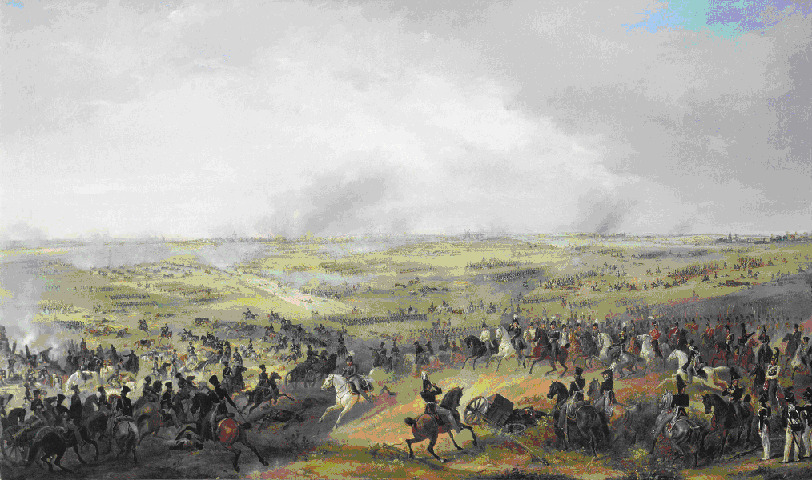
…After a series of battles on the outskirts, which brought an equal number of victims — 6—8 thousand, and a demonstration of artillery batteries, Russian troops occupied Paris without a fight. There are no excesses with the civilian population. Officers pay for alcohol with receipts, or put bottles under the table, thus removing them from the field of vision of not very picky waiters. Later, the Russian emperor, or rather, the working people of Russia, will pay for all this. The imposition of military indemnities on France, a perfectly reasonable proposal of Great Britain, Alexander I complacently rejects.
During the one and a half years of occupation, 40 thousand Russian soldiers leave their army, roughly speaking, they defect, because the Victory has already been achieved, the French women are very friendly, well-to-do, the local authorities in every possible way welcome the appearance of new citizens. Men, after the Napoleonic adventures, in France are simply catastrophically lacking.
In the wake of successes in foreign policy, Alexander the First believes that everything is fine in his state. He is in no hurry with the abolition of serfdom and other major reforms. His opinion is shared by the majority of the Russian nobility.
In 1816 the Baltic peasants were liberated. Initially, the inhabitants of Russian Pomorie, the Caucasus, the Far East, Alaska, parts of Asian possessions, the Finns and, to some extent, the Cossacks are free.
The emperor’s new toy is military settlements. Some similarities exist in Germany. This is Landver, a rural settlement, where a weapons depot for training is located, and the training of young villagers is carried out in their free time by a retired officer. Corporal punishment is prohibited. Landwehr is popular. Freed youth find these infrequent military exercises amusing. Almost half of the army in wartime is Landwehr militia, they serve well.
They are reminiscent of “arable soldiers” and Cossacks. But, in the latter case, the organization and life are created by people at their own discretion, therefore they are viable.
The emperor hands over his idea to the executive officer, Count Arakcheev. He gets down to business with mindless zeal. A battalion of lower ranks of the regiment settles in Novorossiya, with wives and families. Military personnel, unaccustomed to agricultural work, resist. Then gauntlets are used. But, these people are now not peasants in the full sense of the word. Sowing, haymaking, harvesting, etc., are performed not when the time comes, but according to the schedule approved by the authorities.
In 1818, the Senior, then the Younger and the Middle Kazakh zhuzes (a type of large clans) passed under the patronage of Russia. Since 1822, by decree of Alexander the First, the khan’s power in the zhuzes has been abolished.
…On November 27, 1825, the population of Russia, the Senate and the Synod were sworn in to the brother of Alexander the First, Constantine. Constantine himself does not want to rule, assuming that otherwise “… they will strangle me, as they strangled my father.” He is quite comfortable in the Kingdom of Poland, where the prince is the governor of the Russian monarch. He entered into a morganatic marriage with a Polish countess, which in the future may cause complications in the succession to the throne.
At the beginning of the reign, Nicholas the First had to order the execution of five participants in the anti-government uprising. No more orders like this are required. For the lower ranks, they are replaced by corporal punishment, which usually has the same sad result. That is why Nikolai Pavlovich receives the nickname “Palkin” from the people. If the coup d’état succeeded, it was highly likely that a civil war would break out. But, this blood, as it is seen, would have taken away the October Revolution of 1917 and all the events associated with it.
…The interregnum and the uprising of the Decembrists in Persia are perceived as a convenient moment for unleashing a war against Russia. The main target of the Iranian Shah is Tiflis (Tbilisi). The first blow, on July 16, 1826, on Russian territory was delivered by a detachment of 16,000, supported by Kurdish cavalry. Then, on July 18, the 40,000-strong army of Abbas Mirza is crossing the border river Araks. Russian troops are small and scattered. The local Muslim population joins the Iranians. Armenians find refuge in mountainous areas, or fortresses with strong garrisons. However, on September 15, a Russian detachment defeats the 18,000-strong vanguard of the Iranian army on the outskirts of Tiflis. Losses of the parties were 27 and 2000 people. Further, on October 13, near the city of Elisavetpol (Ganja, now Azerbaijan), a separate Caucasian corps crushes the 35,000-strong Iranian army, loses 60 people against 2000. Erivan is liberated. The military forces of the Persians are pushed into Iranian Azerbaijan (historical region of Iran). And, on February 22, 1828, the Turkmanchay peace treaty was signed. Russian possessions are confirmed. From the territories of the Nakhichevan and Erivan khanates, Eastern Armenia, an Armenian region (including Karabagh-Karabakh) was created, to which 30,000 Armenians were resettled from Iran.
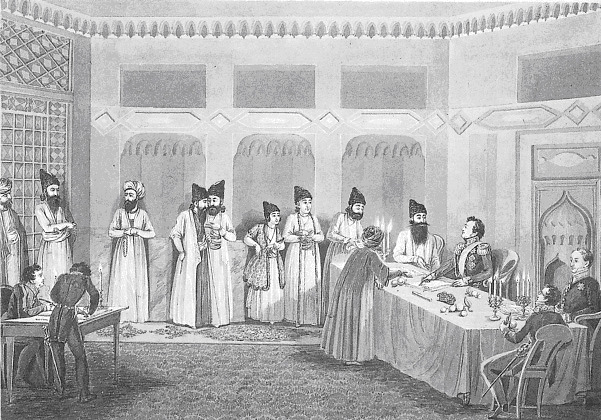
…A new Polish is maturing, the so-called. “November” uprising, under the slogan of the restoration of the Polish-Lithuanian Commonwealth within the borders of 1772. But it is not only exorbitant ambition that drives the insurgents. The reason for the dissatisfaction is the preliminary censorship, the abolition of the Napoleonic jury, and the fact that, according to rumors, Polish troops should become the vanguard of the Russian army in the invasion of Belgium. In any case, a deeply conspiratorial and ramified Patriotic Society has been formed. It wants not to reason, but to act.
And, on November 29, 1830, the conspirators attacked the army barracks. Members of the Patriotic Club are diligently cleaning up the Polish government. The Russian monarch promises nothing but amnesty. The Diet issues a decree on the detronization of Nicholas I and his heirs on the Polish throne. A full-scale war begins.
European countries maintain benevolent neutrality, close their borders to supply the rebels with weapons, ammunition, etc. England is most concerned about what is happening in Poland. She sees here a continuation of the Jacobin and Napoleonic epics.
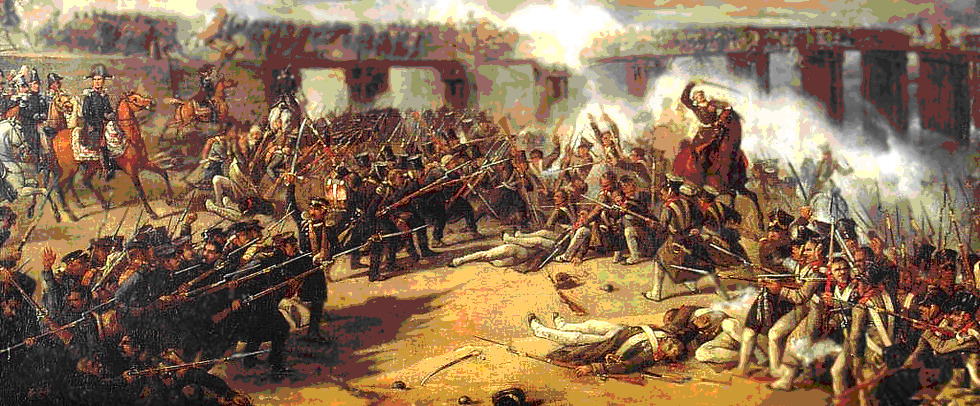
Dispersed Russian troops suffer a series of serious defeats or achieve a draw. The situation is somewhat improved and, on May 26, 1831, a battle will take place near the Polish Ostrolenka. Forces of the parties: Kingdom of Poland — 30 thousand people, 74 guns, Russia — 35 thousand, 148 guns. Artillery plays an important role. Russian gunners occupy a more advantageous position, shoot more accurately and more often. Irrecoverable losses of the parties. Poles — 9 thousand, Russians — 5 thousand. Polish troops retreat to Warsaw. Unrest is rising in the besieged capital. Everyone understands what will happen soon, and they absolutely do not want to participate in this.
During the negotiations, the thirty-two thousandth Polish army rapidly leaves Warsaw, goes to Austria and is disarmed there by the Austrians.
The Kingdom of Poland is declared an organic part of Russia. Own army, the Seim, the national monetary system are abolished. Many Poles with their families settle in various European countries, spreading the seeds of hostility to Russia there. Polish women introduce the custom in their midst — they wear black ribbons in their hairstyles — “a sign of mourning for the lost homeland.”
There is peace in Russia. There is no terrorism. There is a strict regulation of everything, but the rules do not change on the go. By understanding them, you can easily run your own business. The education system, industry, trade and banking system are being strengthened. Corruption exists only in the lower levels of the bureaucracy. The number of state, practically free peasants is growing. They move freely around the country, buy, sell, conclude legally formalized contracts. The state extends the protectorate to the serfs, treating them as citizens, sometimes arresting the landlords’ estates for inhuman treatment of subordinates.
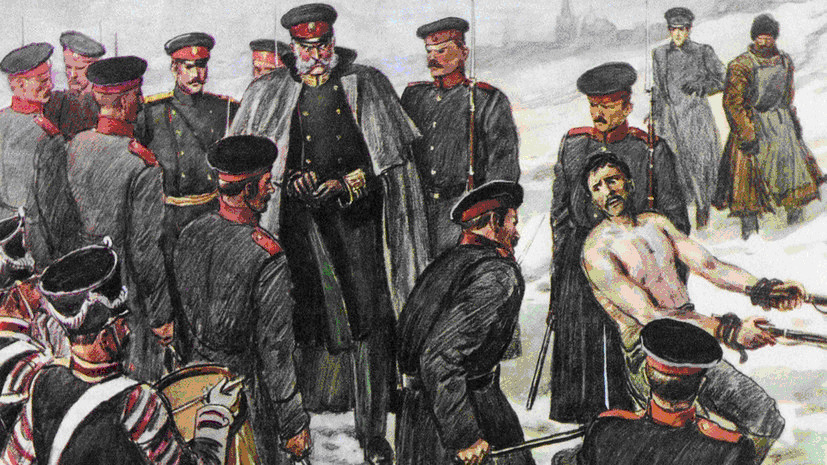
However, the firmness of this system gives rise to problems that open up in a military conflict. The beginning of the Crimean War is an example of intransigence, inability to “sort out” a technical misunderstanding, which first becomes a pretext for war and then a heavy defeat. In 1853, in order to put pressure on Turkey in control over the Church of the Nativity of Christ in Bethlehem, Russia sent troops to Wallachia and Moldavia. Nicholas the First does not want to hear the opinions of England and Austria on this matter. Meanwhile, Great Britain and without wars in the East, through only cleverly drafted agreements on free trade, makes Turkey a dependent country, an important market for industrial goods. The emperor is also not interested in the fact that Napoleon the Third, and the French people are tired of the world, maybe they want to take revenge and flex their muscles. Nicholas provokes the French monarch by pointing out in his congratulatory telegram: “Monsieur mon ami” (“dear friend”) instead of the “Monsieur mon frère” (“dear brother”) allowed under the protocol. The Bonaparte dynasty was excluded from the succession to the throne by the Congress of Vienna, everything is correct, but in this case it would be possible to accept the state of affairs as it is. All these little things lead to the fact that on October 16, 1853, Turkey, and after some time, two more world empires — France and England, which joined them Sardinia, the largest Italian kingdom, declare war on Russia.
There is no escape from the war, but it needs an important pretext. In this serious conflict, neither side looks like a fighter for truth, freedom, or faith.
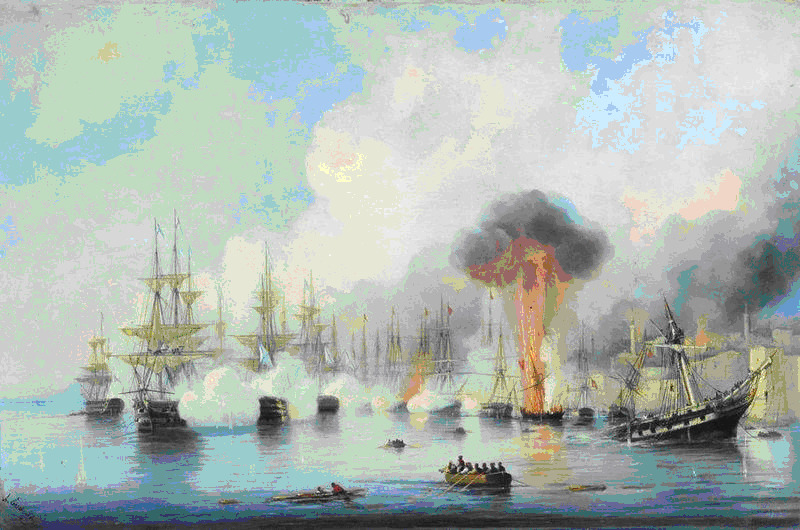
…On November 30, 1853, the Sinop naval battle takes place. Near the city of Sinop, Porta prepares forces, presumably for the landing of troops in Sukhumi and Poti. A detachment of P. Nakhimov’s ships blocks the bay, awaits the arrival of the main forces and makes an attack. The rest can be called a “massacre” — without special tricks, a mixture of ships and the exchange of volleys. Both sides have a novelty of military thought, bombing guns — a cross between a large-caliber mortar and a mortar. For the first time in history, Russian gunners quite successfully use a large caliber that allows them to shoot 25-kg explosive shells with a high content of gunpowder. The Turkish fleet and coastal batteries lose 3,000 people, and 200 sailors, including Commander Osman Pasha, are captured. 7 frigates, 3 corvettes light up, are thrown ashore, a steamer and a lot of small vessels are sinking, 3 vehicles are damaged, 2 coastal batteries are destroyed. The Russian navy loses 150 killed. Damage is taken by 3 ships of the line. The battle of Sinop becomes the swan song of sailing ships.
In Europe, however, this victory is perceived very gloomily, pointing out that, according to the rules of war, it is impossible to attack ships anchored in the port, especially of the lower class and smaller displacement. England and France pledged to maintain armed neutrality only as long as the Russian Empire was defending itself. When it goes over to active hostilities on foreign territory, these two colossal colonial powers declare war on Russia. This is exactly how it happens, on March 27, 1854.
In June 1854, the Allied forces — 34 battleships, 55 frigates (most of them are steam) blockade the Russian fleet — 14 battleships, 6 frigates and 6 steam-frigates in the Sevastopol bay. At the same time, a landing of 62,000 troops on 350 ships is carried out in Evpatoria. Halfway to Sevastopol, a 35,000-strong Russian army meets him. The commander-in-chief, A. Menshikov, the great-grandson of an associate of Peter the Great, expresses a phrase that is becoming a common noun — “We will throw our caps over the enemy” and invites residents, as for a performance, to contemplate the battle.
In the old fashioned way, most Russian officers line up subordinates in a tight square representing the target. The soldiers, obeying more the voice of reason, scatter from the columns. In some cases, allies give them melee. The battle is a series of chaotic bayonet fights. Demoralized by the ongoing chaos, and, most of all, by the accurate shooting from long-range rifled rifles — the so-called. fittings, Russian troops are retreating. The allies, believing that they were fighting not with the entire army, but only with its vanguard, stop. So they miss the opportunity to capture Sevastopol on the move.
Admiral Nakhimov wants to go to sea, fight and die with honor. The commander-in-chief rejects this proposal and orders to flood the Russian sailing fleet along the fairway of the bay.
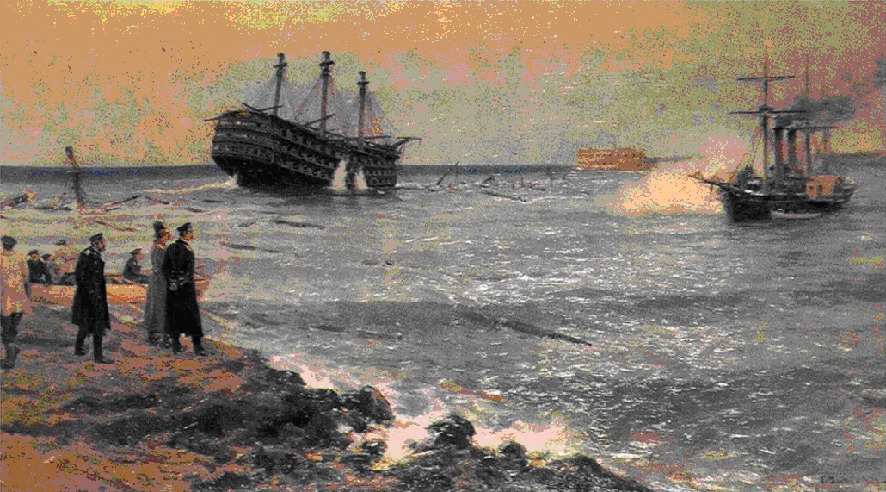
The base of the British expeditionary forces is located 15 kilometers southeast of Sevastopol, Balaklava.
…In the middle of May 1854, 67 steam ships of the Allies appear in the roadstead in front of Krondshtat (Petersburg), luring the predominantly sailing Russian fleet (26 linear, 7 frigates, 7 steam frigates) to battle. Without waiting for this, and making sure that in many places naval mines (600 pieces) are displayed, the squadrons leave. Later, in the spring of 1855, two British frigates were blown up by E. Nobel’s pyrotechnic explosive devices. The ships will get off with minor damage — the charge of black powder is only 4.5 kilograms. However, the psychological effect of the use of new weapons exceeds all expectations.
This is followed by — November 5 — the Battle of Inkerman, an unsuccessful assault on the heights near Sevastopol, 3300 of our own killed against 880 British and French soldiers. A short respite — on November 14, 1954, as a result of a severe storm, 53 Allied ships (including steam ones) sink, including 25 transports. On February 17, 1855, an attempt was made to unblock Evpatoria, which had been captured by the Turks. The besieged repulsed the assault with artillery fire, inflicting 750 casualties on the Russian army, losing 300 of their own. The Ottomans regain their former reputation. Their fighting spirit is getting stronger. Further, on May 24, the Anglo-French fleet occupies Kerch, burns all ships and even fishing boats in the bay. August 16 — a battle near the Black River, a senseless attack by Russian troops on insignificant heights, 1,800 people killed and wounded by the allies, 8,300 — soldiers and officers of the Russian army. Opponents’ steam frigates ply the Black Sea, sometimes shelling the coast or engaging in skirmishes with each other.
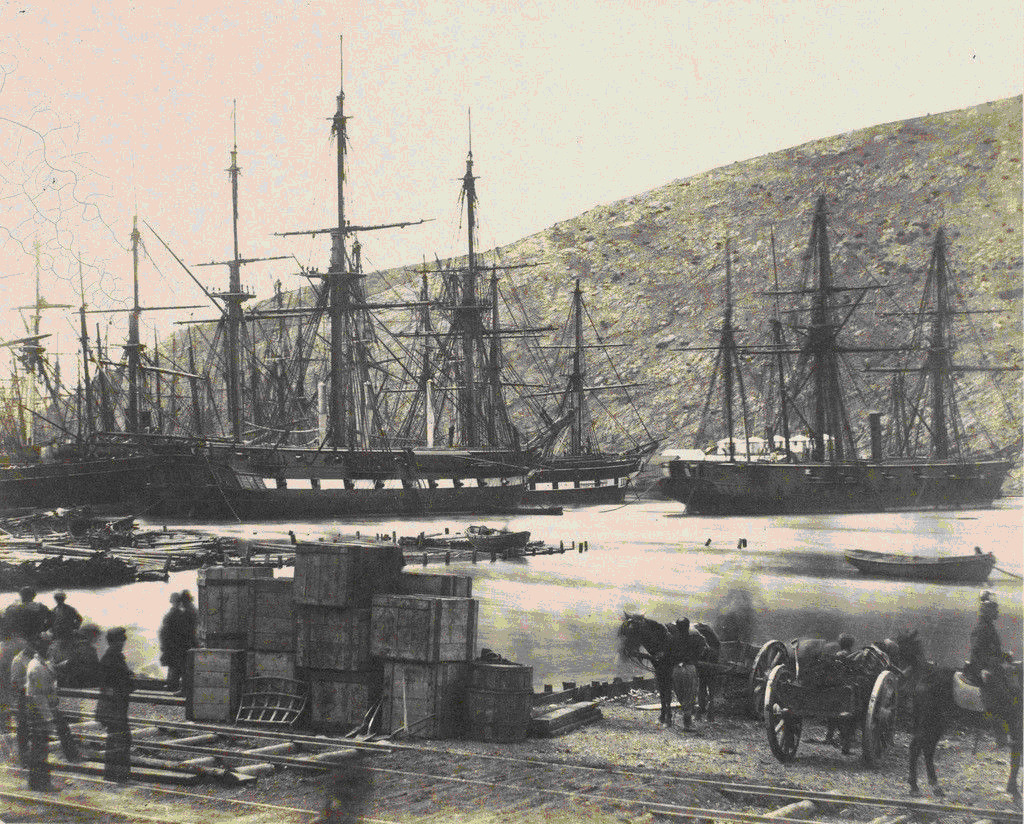
In the Sea of Azov, the Anglo-French fleet bombards or burns, landing troops, coastal cities and towns, including Taganrog and Mariupol. All the time of hostilities on land, the Allies cling to the coast in order to receive the necessary supplies from the fleet. They do not make deep maneuvers across the peninsula. The goal of capturing Crimea is not set. The city is blocked only from the sea, and partly from the land. On the other hand, in the defense of Sevastopol takes a relatively small part of the entire Russian army.
Sevastopol and the strategically important heights adjacent to it are subjected to massive shelling. In early September, French troops take the Malakhov Kurgan. Russian units leave the southern, urban part of Sevastopol and move into a fortified bay. The allies are heading towards the city of Nikolaev, the second base of the Russian fleet. At the mouth of the Dnieper, they bombard the coastal fortress from armored platforms, capture it, leave the garrison and leave for the winter near Sevastopol.
The parties to the conflict are extremely exhausted, are criticized by society, and are quite ready for negotiations. And, on March 18, 1856, the Paris Peace Treaty is signed. Russia agrees to freedom of navigation on the Danube. Refuses protectorate over Serbia, the Moldavian principality and Wallachia. Returns the Turkish city of Kars, together with the adjacent territories, in exchange for “all other places occupied in the Crimea by the allied forces.” The Black Sea is declared neutral. Both the Porte and Russia, any other state in peacetime is prohibited from having a military fleet on it. The fortifications of Sevastopol are being destroyed.
And, yes; the key to the Church of the Nativity in Bethlehem remains with the representative of France. The tsar could have guessed for himself that the right to patronize Christians for a person who leads a country where Christians trade in Christians cannot have.
Russia suffers minimal loss of territory. However, the “Triple Alliance” of the victorious emperors is a thing of the past. The supremacy in Europe moved from St. Petersburg to Paris.
Бесплатный фрагмент закончился.
Купите книгу, чтобы продолжить чтение.
